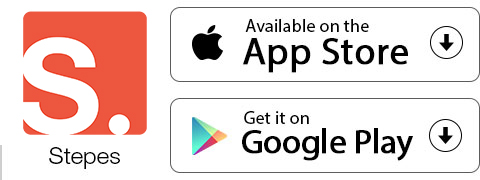 29 Terms
29 TermsHome > Terms > English, UK (UE) > Battle of Marathon
Battle of Marathon
The Battle of Marathon was a battle of the first Persian invasion of Greece between the citizens of Athens, aided by Plataea, and a Persian force commanded by Datis and Artaphernes. It was the culmination of the first attempt by Persia, under King Darius I, to subjugate Greece. The first Persian invasion was a response to Greek involvement in the Ionian Revolt, when Athens and Eretria had sent a force to support the cities of Ionia in their attempt to overthrow Persian rule. The Athenians and Eretrians had succeeded in capturing and burning Sardis, but were then forced to retreat with heavy losses. In response to this raid, Darius swore to burn down Athens and Eretria. At the time of the battle, Sparta and Athens were the two largest city states. ince the following two hundred years saw the rise of the Classical Greek civilization, which has been enduringly influential in western society, the Battle of Marathon is often seen as a pivotal moment in European history.
The distance between the two armies at the point of battle had narrowed to about 1,500 meters. Miltiades ordered the two tribes that were forming the centre of the Greek formation, the Leontis tribe led by Themistocles and the Antiochis tribe led by Aristides, to be arranged in the depth of four ranks while the rest of the tribes at their flanks were in ranks of eight. Some modern commentators have suggested this was a deliberate ploy to encourage a double envelopment of the Persian centre. However, this supposes a level of training that the Greeks did not possess. There is little evidence for any such tactical thinking in Greek battles until Leuctra in 371 BC. It is therefore probable that this arrangement was made, possibly at the last moment, so that the Athenian line was as long as the Persian line, and would not therefore be outflanked.
The Athenian wings quickly routed the inferior Persian levies on the flanks, before turning inwards to surround the Persian centre, which had been more successful against the thin Greek centre. The battle ended when the Persian centre then broke in panic towards their ships, pursued by the Greeks. Some, unaware of the local terrain, ran towards the swamps where unknown numbers drowned. The Athenians pursued the Persians back to their ships, and managed to capture seven ships, though the majority were able to launch successfully. Herodotus recounts the storey that Cynaegirus, brother of the playwright Aeschylus, who was also among the fighters, charged into the sea, grabbed one Persian trireme, and started pulling it towards shore. A member of the crew saw him, cut off his hand, and Cynegirus died.
Herodotus records that 6,400 Persian bodies were counted on the battlefield, and it is unknown how many more perished in the swamps. The Athenians lost 192 men and the Plataeans 11. Among the dead were the war archon Callimachus and the general Stesilaos.
The battle was a defining moment for the young Athenian democracy, showing what might be achieved through unity and self-belief; indeed, the battle effectively marks the start of a "golden age" for Athens. This was also applicable to Greece as a whole; "their victory endowed the Greeks with a faith in their destiny that was to endure for three centuries, during which western culture was born"
- Part of Speech: proper noun
- Synonym(s):
- Blossary:
- Industry/Domain: History
- Category: American history; Ancient Greece; World history
- Company:
- Product:
- Acronym-Abbreviation:
Other Languages:
Member comments
Terms in the News
Featured Terms
phylum placozoa
Macroscopic, flattened marine animals, composed of ventral and dorsal epithelial layers enclosing ...
phylum cnidaria
Cnidarians. Hydras, hydroids, jellyfish, sea anemones, and corals. Free-swimming or sessile, with ...
share a term with millions
Share a term with millions of users around the world and increase your online visibility.Share a ...
oak
Genus native to the Northern Hemisphere with spirally arranged leaves, catkins for flowers and ...
Everest
The last but not least mount Everest. The Earth's highest mountain, with a peak at 8,848 metres ...
aglaonema
Genus of about 20 species of usually rhizomatous, evergreen perennials from tropical forest in Asia. ...
Robojelly
Robojelly is a hydrogen-powered robot desgined in the United States that moves through the water ...
Ferdinand Porsche
Ferdinand Porsche (3 September 1875 – 30 January 1951) was an Austrian-German automotive engineer ...
Marzieh Afkham
Marzieh Afkham, who is the country’s first foreign ministry spokeswoman, will head a mission in east ...
define1
Share a term with millions of users around the world and increase your online visibility.Share a ...
Contributor
Featured blossaries
Browers Terms By Category
- Inorganic pigments(45)
- Inorganic salts(2)
- Phosphates(1)
- Oxides(1)
- Inorganic acids(1)
Inorganic chemicals(50) Terms
- Nightclub terms(32)
- Bar terms(31)
Bars & nightclubs(63) Terms
- Hand tools(59)
- Garden tools(45)
- General tools(10)
- Construction tools(2)
- Paint brush(1)
Tools(117) Terms
- Journalism(537)
- Newspaper(79)
- Investigative journalism(44)
News service(660) Terms
- Manufactured fibers(1805)
- Fabric(212)
- Sewing(201)
- Fibers & stitching(53)





